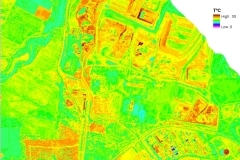Waste, under the EU Waste Framework Directive (European Directive 2006/12/EC), is defined as “any substance or object the holder discards, intends to discard or is required to discard".
Due to the increase in waste production in the latter half of the 20th century, systems for managing waste across Europe and North America have become more sophisticated. Waste may be broadly classified in two ways: hazardous waste that usually has one or more of four characteristics (ignitability, corrosivity, reactivity, or toxicity); and non-hazardous waste.
In Europe, landfills are subject to the following EU Directives: EC Dangerous Substances Directive, EC Groundwater Directive, the European Union (EU) Landfill Directive, the EU IPPC Directive and EU Water Framework Directive and the EU Urban Wastewater Directive.
Illegal landfill sites are a problem across Europe, particularly countries like Greece, Italy and Spain. Greece has been referred to the European Court by the European Commission twice for illegal landfill sites at Kouroupitos and Mesomouri in Chania, Crete. Italy also received a final written warning because of numerous illegal or uncontrolled landfills on its territory.
Management of waste presents a number of challenges, partly because of the devise nature of waste materials, storage methods and treatment methods.
Project objectives and users
Wastemon project, funded by European Space Agency (ESA) under the VAE (Value Adding Element) programme, aims to stimulate the use of Earth Observation (EO) data through the development of waste management prototype services.
The Wastemon project objectives are listed below:
- Develop prototype service for waste management
- Design and test service which can be integrated into the users processing stream
- Development of a business model for future roll-out of service
- Promotion of the services
The institutions responsible over the waste cycle and contaminated sites monitoring (e.g. ARPA- Regional Agency for Environmental Protection), the waste producers (e.g. companies which produce special waste) and waste disposal establishments, are the main user segment of Wastemon service.
The Wastemon project users are:
- Northern Ireland Environment Agency (UK)
- Cork County Council (Ireland),
- Puglia Regional Authority (Italy)
- Waste Services Inc (Canada)
The methodology
Remote sensing instruments are the most widespread and suitable tools for wide landfill monitoring.
The remote sensing approach allows to optimise the investigation period and the survey costs. Moreover it let the information extraction upon rough and adverse areas.
Wastemon project is based on the results that have been reached up to now in the field of environmental monitoring, by exploiting the last generation high resolution EO data (eg. Worldview, Geoeye).
During the Wastemon project the use of Differential Interferometry through Synthetic Aperture Radar (D-InSAR) will be analysed. The D-InSAR could be a useful instrument to check and to monitor the waste volumetric change.
For the Wastemon service, a multi-sensor approach has been adopted. This approach will relate multispectral, hyperspectral and radar data with ancillary and in situ data.
Some test targets have been localised in order to monitor the potential presence of specific landfill.
The Service
The Italian user is Apulian Regional Agency for Environmental Protection (ARPA Puglia), the regional authority for licensing and monitoring waste issue.
ARPA Puglia, that will provide landfills geographic database with info about typology and extent of the sites, has a particular interest in investigation of an important industrial district in the south of the region where there is occurrence of different typologies of illegal deposits.
The team includes:
- ERA – Maptec Ltd (Ireland)
- Planetek Italia (Italy)
- EBA Engineering Consultants Ltd. (Canada)




